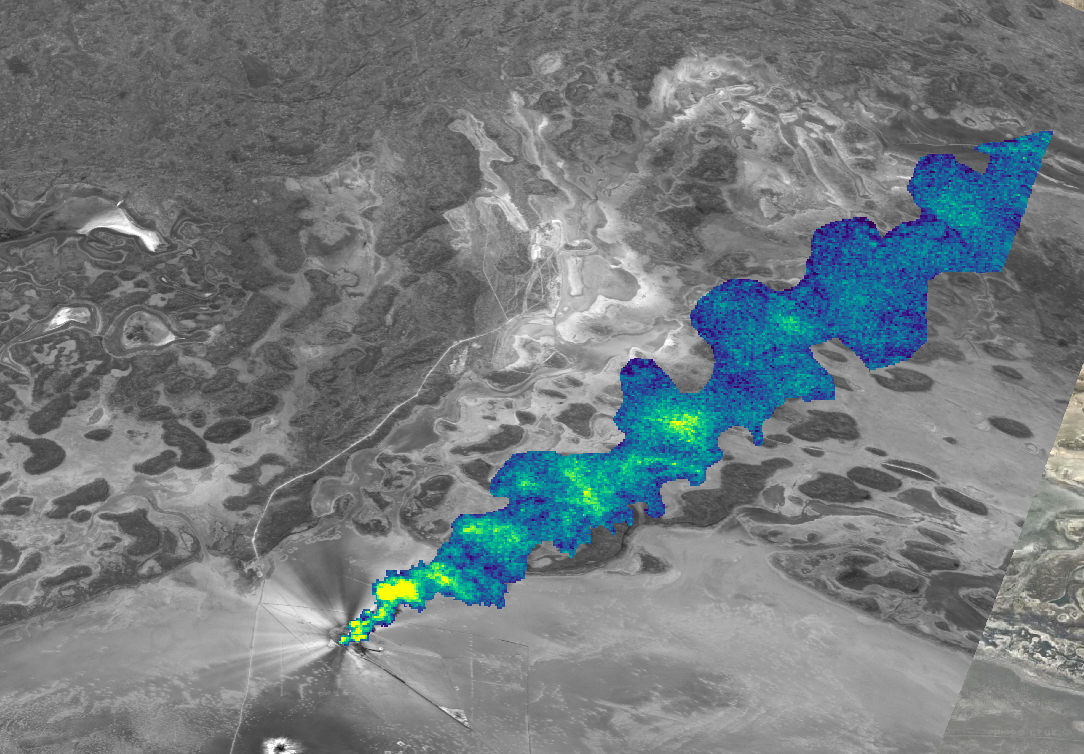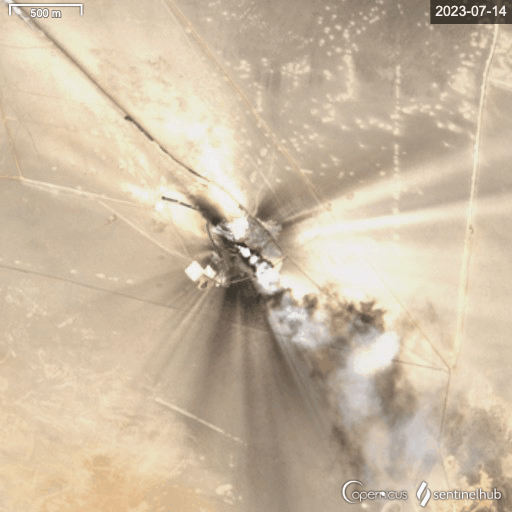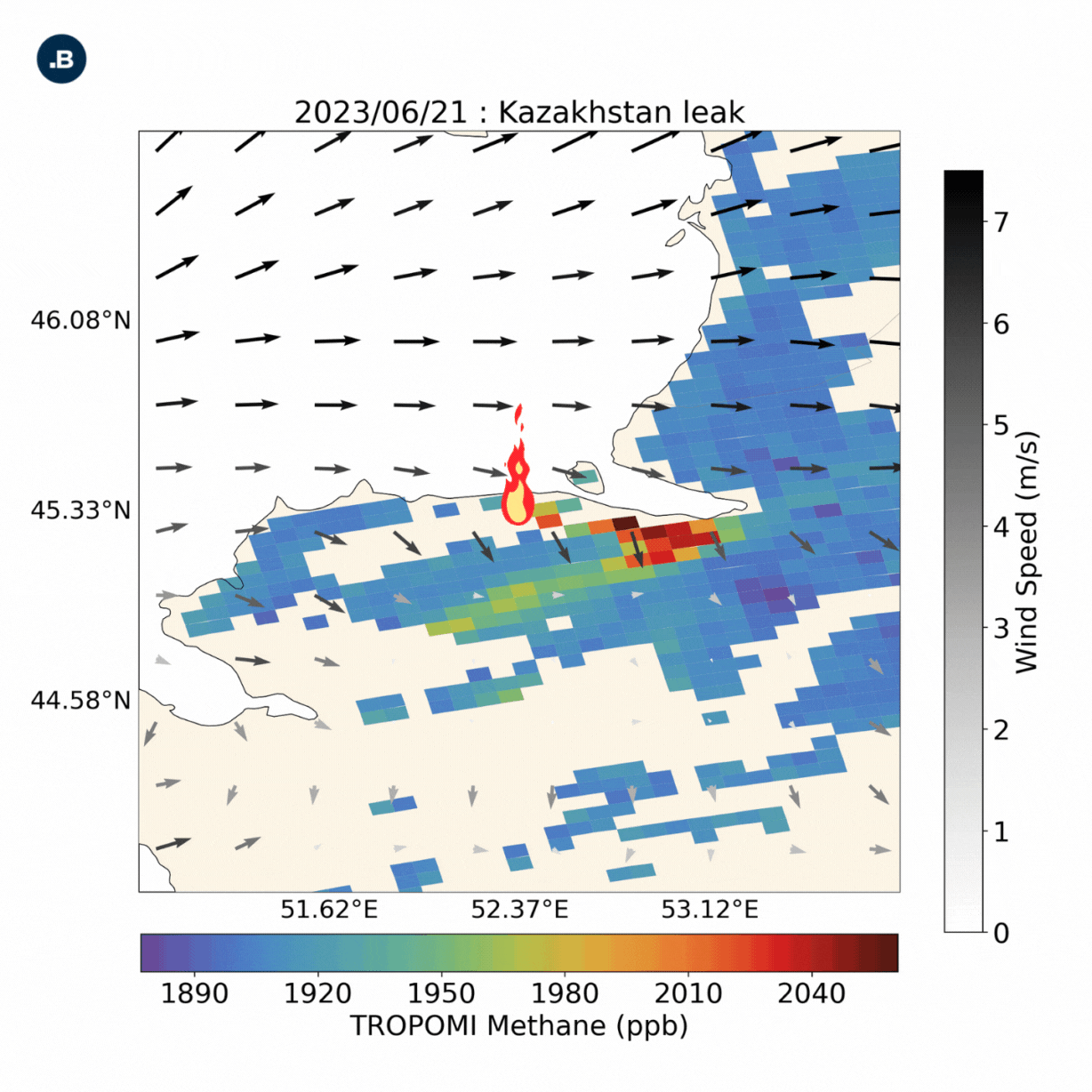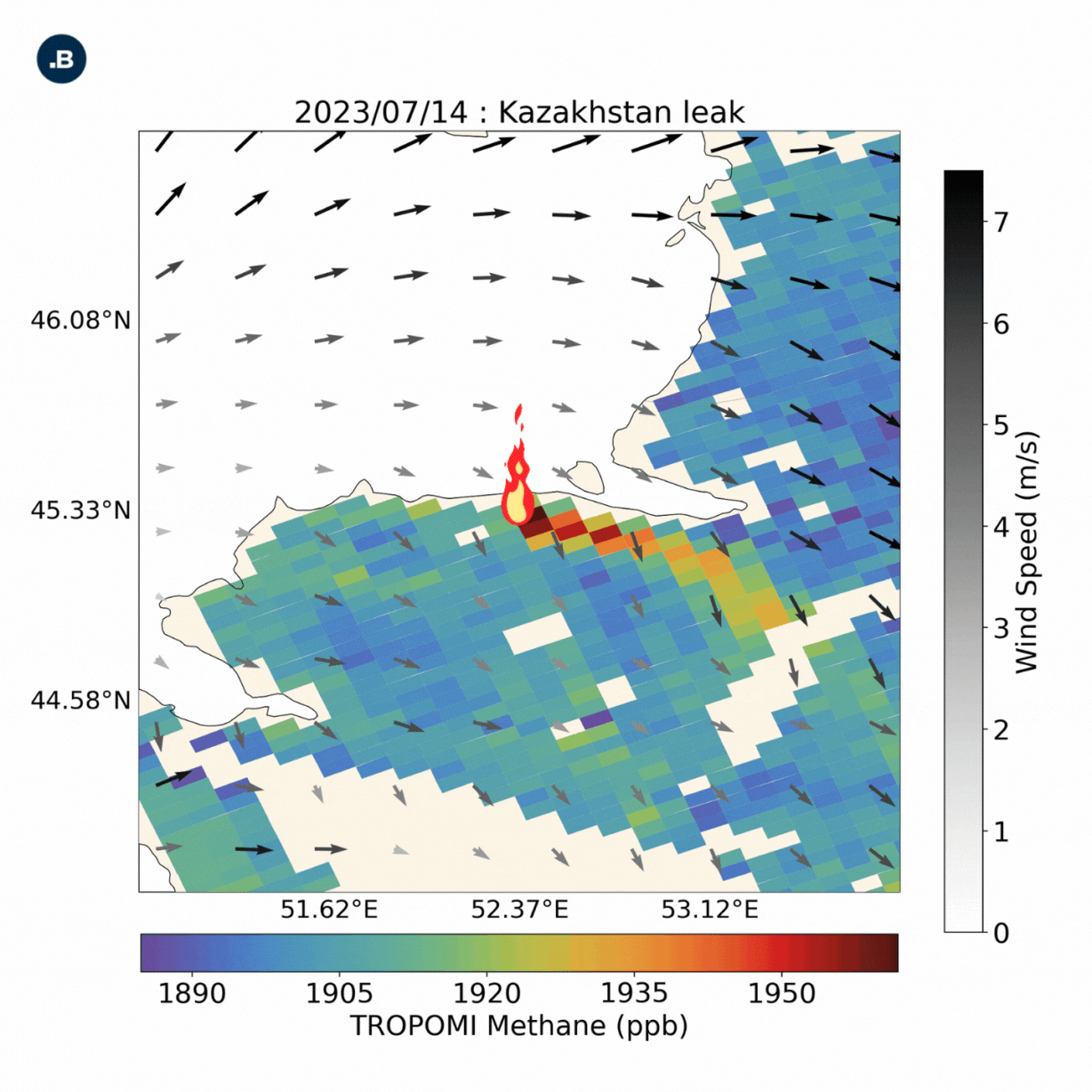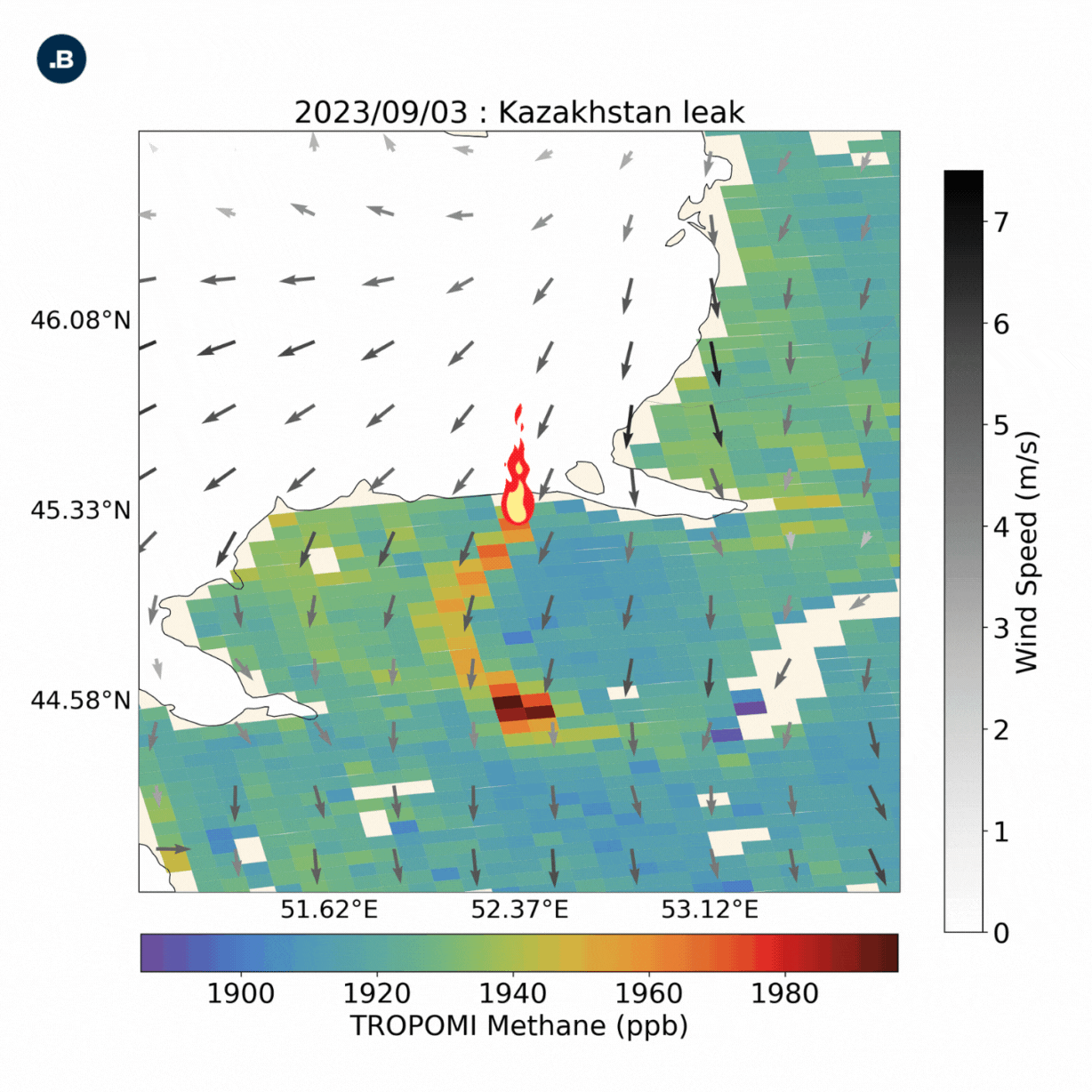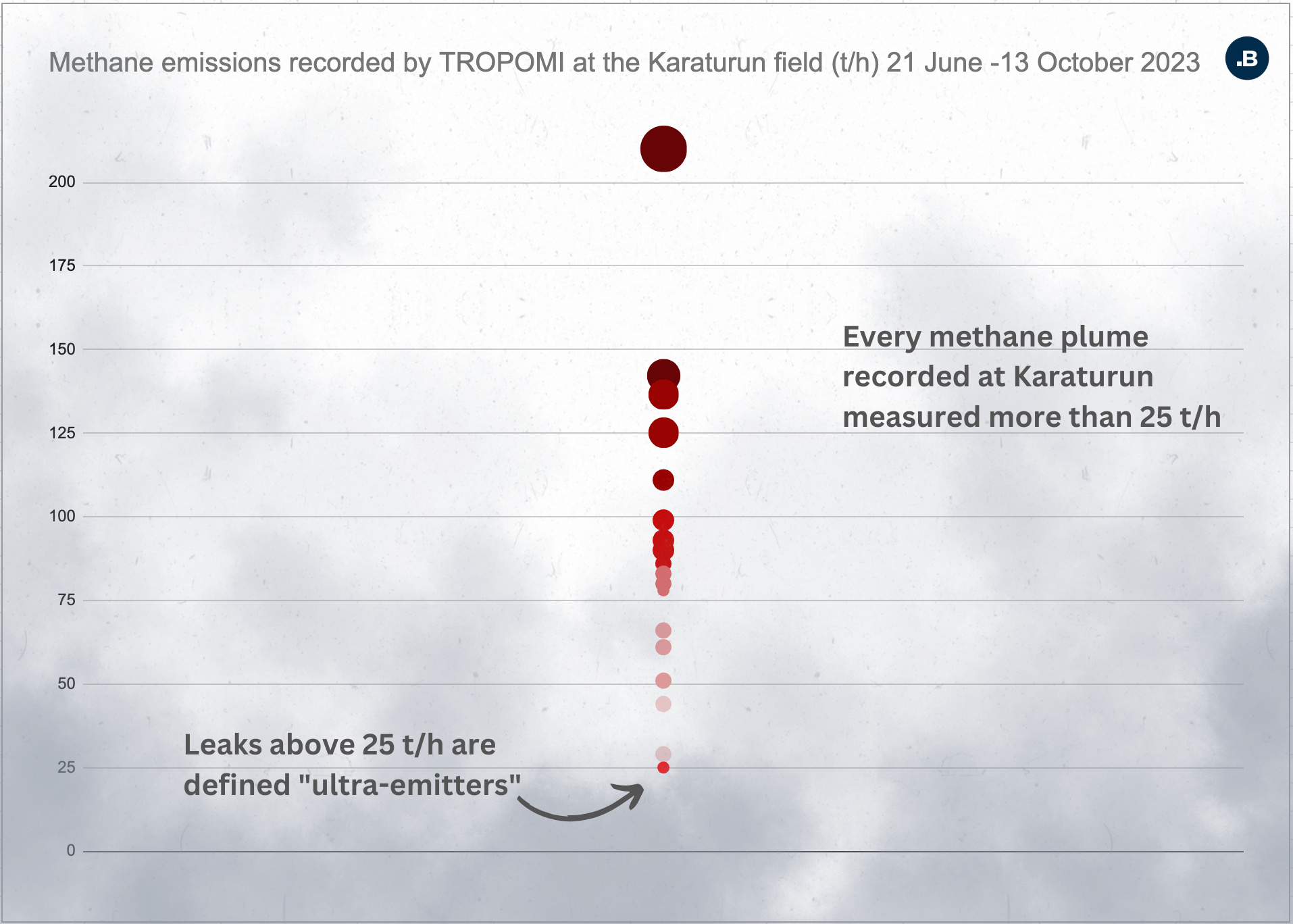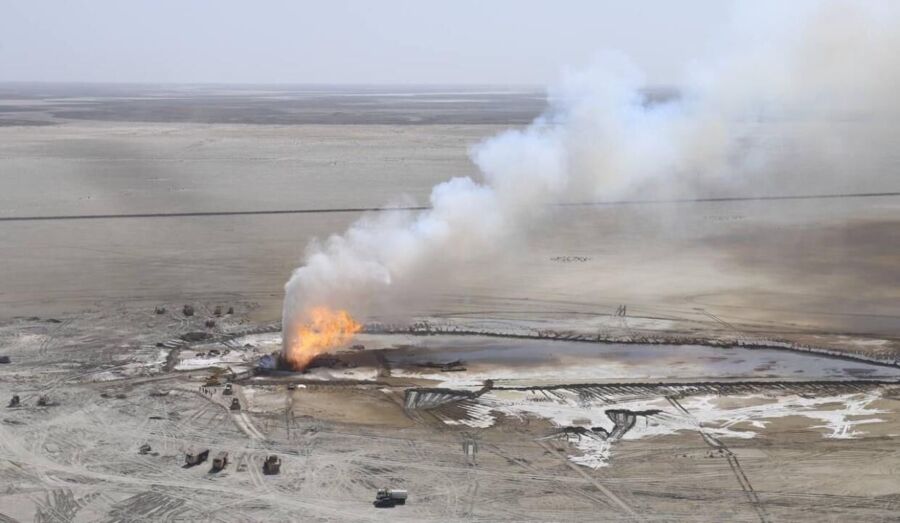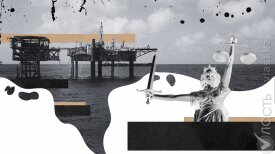More than four months since a fire broke out at the Karaturun-South field in Kazakhstan’s Mangistau region, a methane leak continues to be visible to the geospatial imagery collected by several space agencies, highlighting an ongoing environmental disaster.
The news of the leak was extensively covered in August, when geoanalytical researchers showed that the leak in Mangistau could be classified as a “super-emitter”.
Kayrros SAS, the French geoanalytical firm that first brought the leak at Karaturun to the attention of the media, said the leak has continued uninterrupted since the accident.
“We have continued to observe methane leaks from this asset regularly,” a Kayrros spokesperson told Vlast.
The government, however, seems to concentrate more on the ongoing fire at the field, than on the methane leak. The latter carries more severe consequences for the environment, as methane is 80 times more potent as a greenhouse gas than the carbon dioxide released by the burning fire.
On October 3, during Kazenergy, a forum that gathered dozens of oil and gas companies in Astana, the minister of ecology Yerlan Nysanbayev emphasized the need to curb emissions.
“We believe that the oil and gas companies in Kazakhstan need to take active measures to control and reduce methane emissions at all stages of production,” the minister said.
When we asked about the ongoing fire and methane leak at the Karaturun gas field, the minister was caught by surprise.
“No, I haven’t heard of this. Where is that? I just took office. I’m just getting into things,” Nysanbayev answered.
The ministry of ecology, which has seen three bosses in the past year, thus sits on the sidelines, while the ministry of energy and the regional department of ecology in Mangistau take on the burden of finding a solution to the accident.
At a press briefing on October 16, Nysanbayev said: “[At Karaturun] we periodically monitor the state of emissions into the atmosphere on a systematic basis.”
A Crisp Image
Methane is an invisible and odorless gas. A New York Times interactive piece in 2019 showed how, by making it visible, it is possible to show the extent of the problems it causes. Beyond more difficult surface measurements, satellite imagery can clearly show methane plumes and roughly calculate their mass.
Erik Arends, a spokesperson for SRON, the Netherlands Institute for Space Research, said there is little doubt that the methane leak is ongoing.
“The leak was first clearly detected by TROPOMI on June 21, 2023. While TROPOMI coverage is limited by clouds, you can see many detections from the Mangistau peninsula, for example last week” Arends said, pointing to the methane plumes that are visible from satellite imagery.
TROPOMI is an instrument for the monitoring of the Troposphere, the layer of atmosphere closest to the Earth's surface. TROPOMI is on board the Copernicus Sentinel-5 Precursor satellite, launched into orbit in 2017 by the European Space Agency.
Vlast obtained timestamped imagery that clearly shows the methane plume and how it travels according to the wind direction. We animated the location of the fire at the field for clarity.
When unhindered by the clouds, the satellites of the European Space Agency and the Italian Space Agency, were also able to measure, with a certain degree of uncertainty, the emission volume from the field.
The picture, according to calculations by SRON accessible via their online monitoring tool, shows that emissions are far above the “super-emitter” grade, into the “ultra-emitter” group. The long-lasting leak is causing massive damage to the environment and could be classified as one of the largest in history.
In the graph below, we show visually how each of the measurements by TROPOMI compares to the definition of “ultra-emitter”, that is emissions above 25 tons/hour.
Measuring Something
The Mangistau department of ecology, in an answer to a question from Vlast, said that, according to their measurements, “the territory is being polluted.”
“On June 9, atmospheric air measurements were taken to determine the presence of pollutants during the fire. The results showed the concentrations of methane exceeded the permissible level of 2,540 mg/m3,” the department said in a written note.
Atmospheric measurements are being carried out weekly, the department added.
Yet, the extent of the pollution is difficult to gauge before the fire at the field is extinguished, the ministry of ecology in Astana told Vlast.
“Specialists are unable to provide accurate information until the fire is extinguished,” a spokesperson of the ministry said on October 13.
The ministry of energy agrees.
“At the moment, it is not possible to approach the wellhead until the pressure of the fountain at the emergency well decreases,” the ministry told Vlast in a note.
The Mangistau department of the ministry of ecology, meanwhile, promised to carry out an audit of the field once the emergency situation is resolved, in an effort to determine responsibilities and damages.
“Following the resolution of the incident, the department will organize an unscheduled inspection with the participation of government agencies, research institutes, and independent experts,” the department said in a note.
Importantly, earlier estimates that the concentration of methane was “between 2% and 3%”, brought forward in August by Buzachi Neft, the company that operates the field, and the Mangistau department were not confirmed in our latest communication with them.
Many Solutions, No Solution Yet
When we asked Buzachi Neft how they planned to stop the methane leak, they said they first needed to extinguish the fire, and that the emergency operations would continue until October. The company also added that, since the accident, its emergency work is coordinated through the Mangistau department of ecology and the ministry of energy.
The ministry of energy said that environmental conditions have a decisive impact on the solution of wellhead accidents.
“It should be noted that there is no universal solution to eliminate similar accidents. The ministry, together with experts, veterans of the oil and gas industry, and design institutes, as well as [national oil and gas company] Kazmunaigas, KMG-Drilling, Buzachi Neft, and others, conducts technical consultations on an ongoing basis,” Askhat Khasenov, vice-minister of energy, told Vlast.
In an answer to our questions regarding the progress of emergency remediation efforts, Buzachi Neft announced that the company is in the final stages of resolving the incident.
“As of October 16, as a result of the first stage of the final measures to eliminate the accident, the release of gas from the emergency well decreased significantly, which led to a decrease in the intensity of the burning flame,” Daniyar Duisembayev, deputy general director for strategic development, said.
The “first stage” is the flooding and isolation of the gas layer. Once complete, the company said it would begin working on the sealing of the emergency well. As previously mentioned, the company plans to resolve the emergency situation “in October”.
Поддержите журналистику, которой доверяют.
